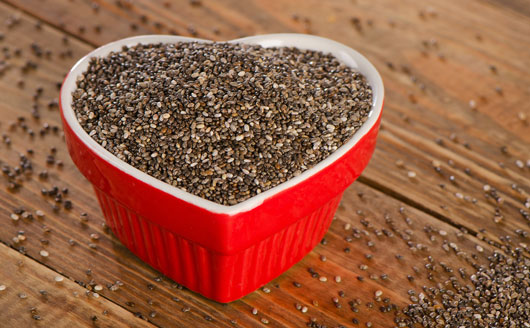Editor’s Note: The following article is one in a series of pieces inspired by a celebration of Latino heritage and smart nutrition, brought to you by Beech-Nut/Goya.
As we introduce our baby to solid foods, there is often some trepidation in the first few months. After all, our tiny, fragile infants have only previously ingested formula or breastmilk, and most children handle that just fine. Then, a whole new world of possibility opens up and physician recommendations, internet rumors, and our abuela’s warnings all conflict as to when to start, what to try, and how to spot an allergic reaction to food in our babies. Regardless of whether you start solids with a rice cereal or a mashed avocado, as a parent, it’s your responsibility to be on the lookout for signs your baby is having an allergic reaction to a food. While sensitivities, intolerances, and allergies have a tendency to resolve themselves over time, knowing how your child reacts to ingesting certain foods is very important. Seeing your baby react to a food with an allergic response can be scary at best and sometimes warrants a trip to the emergency room. These tips and telltale signs will help you understand these symptoms and help prepare you for the worst, just in case.
Read Related: Kids with Food Allergies? Try These Tasty Substitutes!
THE 4 DAY RULE
Pediatricians and grandmothers alike recommend waiting approximately four days between the introductions of new foods. For example, if you’re starting solids with pureed peas, you would give only peas for four days to ensure there is no negative response. Then, you would be free to add pureed carrots to the daily menu for the following four days, again observing your baby to recognize any pain, discomfort, or allergic reaction.
The four day rule makes sense because you’ll know immediately what the substance is that’s hurting your baby if you’re sure everything else he’s eating has been proven safe for his system. Unfortunately, as our infants get older and their diets become more varied, it becomes difficult to uphold the four day rule. For example, you’re out for lunch and there’s a melon he’s never tried in your fruit bowl. He’s sharing your fruit with you, has some, likes it, and everything seems fine. But you introduced steel-cut oatmeal at breakfast that day and now you’re not sure if she has gas because of the melon or the oatmeal… Oops. We all do it and most of the time it’s no big deal. Just try to keep the four day rule in mind as much as possible for the first year or so of solid foods.
AN ALLERGIC REACTION
Gas, constipation, fussiness, and other digestive upset is an indication that your baby ate something that isn’t quite agreeing with him. This may mean a dietary sensitivity or intolerance. For my little one, we avoided dairy for a long time (no yogurt, cheese, etc.) since she had this exact response to my breastmilk when I ingested dairy. An intolerance or sensitivity to a food may bring on mild discomfort and inconvenience. But don’t mistake this for a full-blown food allergy as that’s completely different.
Allergies are the body’s immune system attacking an otherwise benign intruder. True food allergies often run in families (my brother was allergic to rice so we tend to avoid it for our girls) and symptoms can range from mild but bothersome to dangerous and deadly. In your child, here are some things to watch for that could indicate an allergic reaction to a food:
- Mouth or lip swelling or itching
- Stuffy nose, difficulty breathing, wheezing
- Clumsiness: Your children cannot tell you he’s dizzy or woozy, but he may seem off-balance
- Hives and suddenly itchy skin
- Stomach upset (vomiting, diarrhea, clutching stomach in pain)
Anaphylaxis can occur quickly or up to a few hours after eating the food and can be deadly, so watch for:
- Sudden swelling of throat and/or mouth
- Sudden, extreme difficulty breathing
- Violent vomiting
- Fainting
While most allergy symptoms simply warrant a call to your pediatrician to schedule a follow-up or a plan to avoid the food until a future date, any signs of anaphylaxis must to be treated with an immediate call to 911.
BE PREPARED
If allergies run in the family, it’s best to take caution and avoid those foods as well as other common allergens. These include: milk, soy, eggs, peanuts, shellfish, tree nuts, and wheat. Your pediatrician can advise you on when and how to introduce these foods. If your child has had a response to one of these (or any other) food, your doctor will recommend no consumption of the food for a period of time. If the reaction is severe enough and the risk of exposure great (example: an allergy to peanuts when your child attends daycare), your child will be prescribed an epi-pen (a device that administers a life-saving dose of epinephrine in case of anaphylaxis).
If allergies are not present among family members and your child has shown no signs of any distress while eating solids foods thus far, congrats! Remember to keep a close eye on your child in the hours following the introduction of new foods in the future and, as with all burdens of motherhood, if your instinct is telling you something is wrong, don’t hesitate to call your pediatrician.












